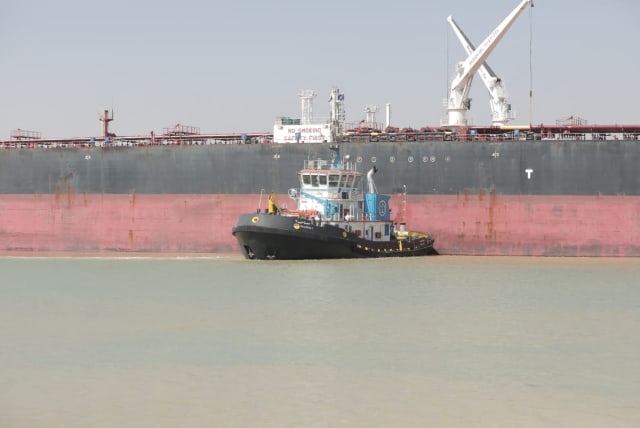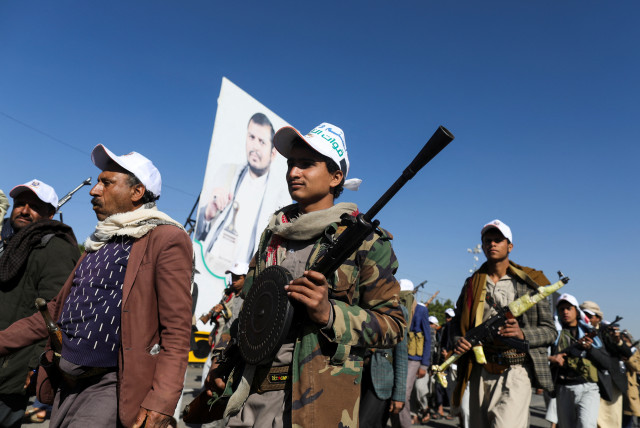Two diverted oil tankers enter Red Sea but disruptions continue

Reuters has tracked at least 22 other oil tankers to have diverted or paused since last Friday's warning from the US-led Combined Maritime Forces (CMF) in Bahrain.
Two oil tankers that had diverted away from the Red Sea have turned back and passed through the Bab al-Mandab Strait, ship-tracking data shows, though tensions in the region continued to disrupt global shipping and trade.
The vessels' return, as tracked by LSEG and Kpler, comes nearly a week after the United States and Britain launched strikes against Houthi positions in Yemen in retaliation for the militant group's protracted attacks on commercial shipping since November.
Until the strikes and despite the Houthi attacks, the majority of vessels continued to traverse the Red Sea, but more ships were diverting course because of escalating tensions.
It was not clear what prompted the two tankers' return, but some industry analysts said vessels willing to continue using the Red Sea route might be able to profit from trepidation in other corners of the freight market.
"It could be the case that some tanker owners are willing to go through the Red Sea if the freight (cost) is right," said Alberto Ayuso Martin, head of research at Spain-based Medco Shipbrokers.
Overall traffic of oil-laden tankers through Bab al-Mandab was 58% lower than the 2023 average over Jan. 13-17, said Mary Melton of analytics firm Vortexa, extending a 38% fall prior to the strikes between Jan. 6 and Jan. 10.
Tankers transporting "clean" fuels such as diesel and jet fuel have been more severely affected than those carrying residual fuels, known as "dirty" because of their higher toxicity, and crude oil, Vortexa's Melton said.
Unknown destination
The two Aframax tankers that passed through Bab al-Mandab on Jan. 17 after previously turning away from the Red Sea are the Indonesia-flagged Gamsunoro and the Marshall Islands-flagged Free Spirit.
Both tankers are carrying heavy fuels and were last called at Fujairah - one of the biggest fuel oil hubs in the world - in the United Arab Emirates (UAE), the data shows.
The owners of the cargoes and their destinations are unclear, but both vessels had signaled for Saudi Arabian Red Sea ports in the past week.
Saudi oil giant Aramco can bypass Bab al-Mandab because of an oil pipeline connecting Saudi Arabia's eastern oil facilities and its western coast, Chief Executive Amin Nasser said. He added that oil products exports could face diversions.
Reuters has tracked at least 22 other oil tankers to have diverted or paused since last Friday's warning from the US-led Combined Maritime Forces (CMF) in Bahrain for ships to avoid the Bab al-Mandab Strait for several days.
As many as 15 oil tankers were taking the longer route around the Cape of Good Hope in either direction, which can add up to three weeks to voyages between Asia and Europe.
A further seven remain in the Gulf of Aden or in the northern half of the Red Sea.
Jerusalem Post Store
`; document.getElementById("linkPremium").innerHTML = cont; var divWithLink = document.getElementById("premium-link"); if (divWithLink !== null && divWithLink !== 'undefined') { divWithLink.style.border = "solid 1px #cb0f3e"; divWithLink.style.textAlign = "center"; divWithLink.style.marginBottom = "15px"; divWithLink.style.marginTop = "15px"; divWithLink.style.width = "100%"; divWithLink.style.backgroundColor = "#122952"; divWithLink.style.color = "#ffffff"; divWithLink.style.lineHeight = "1.5"; } } (function (v, i) { });

